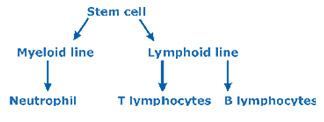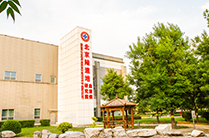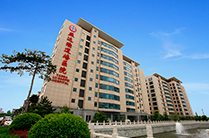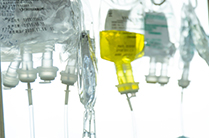Overview
What Is Chronic Myeloid Leukemia (CML)?

Chronic myeloid leukemia (CML) occurs when too many neutrophils develop from immature cells of the white blood cell myeloid line.
The disease occurs mainly in adults and is rare in children, and is most associated with a chromosomal abnormality called the Philadelphia chromosome. This rearrangement changes the position and functions of certain genes, which results in uncontrolled cell growth. Other chromosome abnormalities can also be present.
CML is characterized by a chronic phase that can last for months, or years. The disease may have few or no symptoms during the chronic phase. Eventually, however, patients progress from the chronic phase to a more dangerous “accelerated phase,” during which time the leukemia cells grow more quickly.
Symptoms
Symptoms of Chronic Myeloid Leukemia (CML)
Many people do not have symptoms in the early phase of CML. Instead, the leukemia is found during routine blood tests. When people do have symptoms from CML, the following are the most common. However, each individual may experience symptoms differently.
Symptoms may include:
• Night sweats
• Weight loss
• Fever
• Persistent weakness
• Fatigue
• Aches in bones and joints
• Enlarged spleen
The symptoms of chronic myeloid leukemia may resemble other blood disorders or medical problems. Always consult your doctor for a diagnosis.
Causes
Risk Factors for Chronic Myeloid Leukemia (CML)
Possible risk factors include:
• Exposure to radiation, chemicals, such like benzene
• Non-hereditary genetic mutation
Most people with CML have a genetic mutation called the Philadelphia chromosome.
Every cell in the body contains DNA that determines how the cell looks and acts. DNA is contained inside chromosomes. In CML, part of the DNA from one chromosome moves to another chromosome. This change is called the “Philadelphia chromosome.” It results in the bone marrow making an enzyme, called tyrosine kinase, that causes too many stem cells to develop into white blood cells (granulocytes or blasts).
The Philadelphia chromosome occurs when a piece of chromosome 9 and a piece of chromosome 22 break off and trade places. The BCR-ABL gene is formed on chromosome 22 where the piece of chromosome 9 attaches. The changed chromosome 22 is called the Philadelphia chromosome.
The Philadelphia chromosome is not passed from parent to child.
Diagnosis
Diagnosing Chronic Myeloid Leukemia (CML)
A number of tests and procedures may be used to diagnose CML, including:
• Blood tests
• Bone marrow aspiration and biopsy
• Cytogenetic analysis
Additional blood tests and other evaluation procedures may also be performed.
Staging
Chronic Myelogenous Leukemia (CML) Staging
Instead of stages, doctors describe CML in terms of phases: chronic phase, accelerated phase, and blast phase.
• Chronic Phase
During this phase, you have fewer than 10% blasts, which are immature white blood cells, in your blood or bone marrow. You usually have relatively mild symptoms (if any) and respond to standard treatments.
• Accelerated Phase
During this phase, you have more than 10% but fewer than 20% blasts, which are the immature white blood cells. You may have a fever, poor appetite, and weight loss. During this phase, your symptoms and blood counts may not respond as well to treatment. Your leukemia cells may have developed other chromosomal changes, in addition to the Philadelphia chromosome (a chromosomal abnormality associated with CML).
• Blast Phase
During this phase, you have more than 20% of the immature blasts in your blood or bone marrow. These blast cells often spread to other areas of your body outside the bone marrow. When tiredness, fever, and an enlarged spleen occur during the blastic phase, it is called blast crisis. This phase is considered aggressive.
Treatments
Treatment for Chronic Myeloid Leukemia
Different types of treatment are available for patients with chronic myelogenous leukemia (CML). Some treatments are standard (the currently used treatment), and some are being tested in clinical trials.
• Blood and bone marrow transplant
A specialized therapy to transfer healthy bone marrow cells into a patient after their own unhealthy bone marrow has been eliminated.
• Chemotherapy
The use of anticancer drugs to shrink or kill cancerous cells and reduce cancer spreading to other parts of the body.
Interferon chemotherapy has been a mainstay of treatment for CML, especially in older patients. Other chemotherapy drugs such as hydroxyurea and busulfan are also often considered.
• Targeted therapies
Targeted therapies can target cancerous cells without affecting healthy tissue, unlike radiation and chemotherapy treatments.
Tyrosine kinase inhibitors are targeted therapy drugs used to treat chronic myelogenous leukemia.
Imatinib mesylate, nilotinib, and dasatinib are tyrosine kinase inhibitors that may be used as initial treatment for newly diagnosed patients with chronic phase CML.
(The content above extract from stanfordhealthcare.org)
-
-
Diseases ·
-














 京公网安备13108202000843号
京公网安备13108202000843号